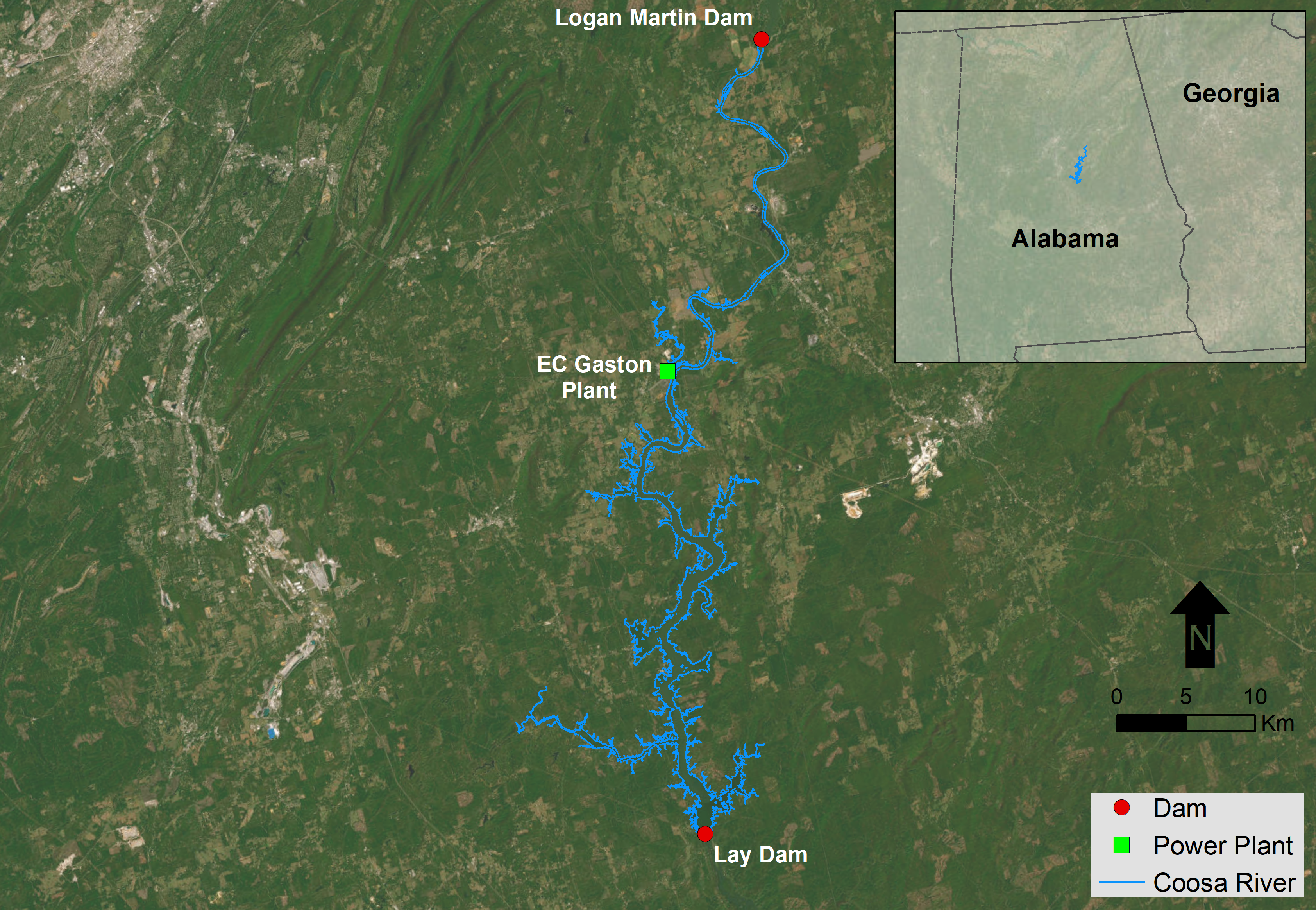
Alabama Power Company
From 2015 – To 2024
Ongoing support
The Coosa River is one of the most developed rivers in Alabama, USA. The river is used for recreation, drinking water, power generation, agriculture, and timber. One section of the Coosa River between Logan Martin and Lay dams is the Lay Lake which was impounded by one of the earliest concrete dams in the US. The hydrodynamics and thermodynamics of this lake are strongly governed by the operation of the hydropower plants at the Logan Martin and Lay dams and Ernest C. Gaston thermal power plant.
To assist Alabama Power with effective and environmentally sustainable power generation for the Lay Lake, DSI has developed a numerical modeling and investigation of the thermal and hydrodynamics of the lake using the Environmental Fluid Dynamics Code (EFDC) model. The model has been set up for the main channel and embayments of the Coosa River between the two dams using a curvilinear orthogonal grid and takes into account hydrodynamic and hydrothermal processes as well as meteorological forcing of winds, solar radiation, and evaporation. Model boundary conditions are flow and temperature data of the water released from the dams and operational data of the power plants. The real-time model was calibrated against the field measurements of flows, water level, and water temperature. The model was developed to serve as a decision-making tool for Alabama Power Company (APC) electricity generation and assist in the efficient operation of Logan Martin, Lay, and Plant Gaston in order to meet generation needs while staying in thermal compliance at the monitoring buoy below Gaston. An online web interface was designed to visualize the results of the real-time EFDC+ model and provide quantitative comparisons to the thermal standard to help in real-time decision-making.

Coosa River in Alabama,USA
This system has an array of features for managing real-time data, analyzing real-time model performance, building operational scenarios, and forecasting operational impacts. The real-time prediction system utilizes several PCs allowing up to six forecast scenarios to be simultaneously run without degradation of performance. OpenMP is also utilized in the EFDC model to allow for more efficient model runs. It has been demonstrated to be a powerful tool for the efficient management of unit loads and dam releases.
DSI continues to support and maintain this tool for APC.